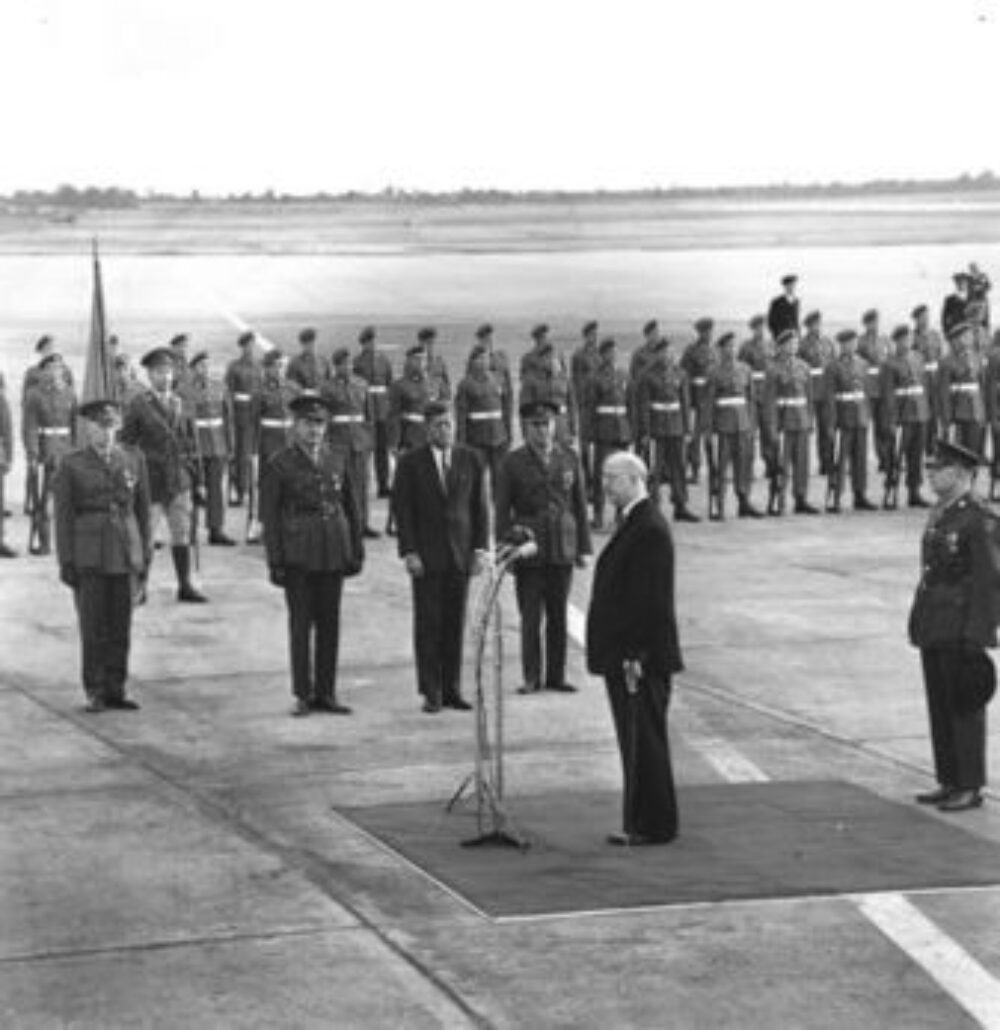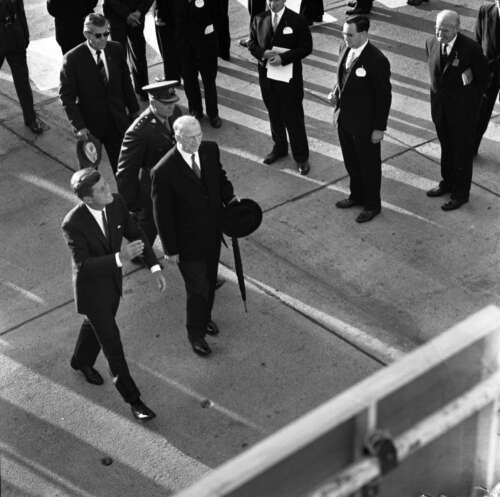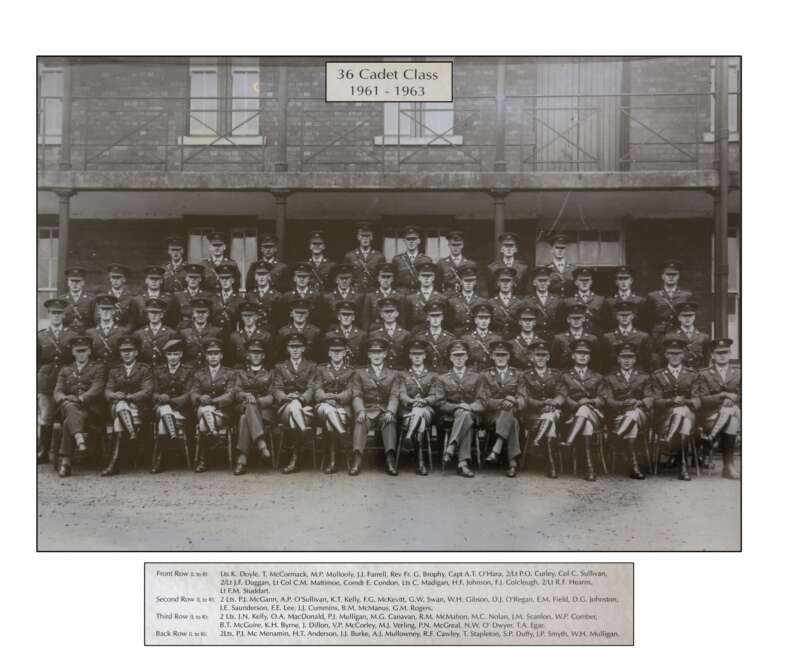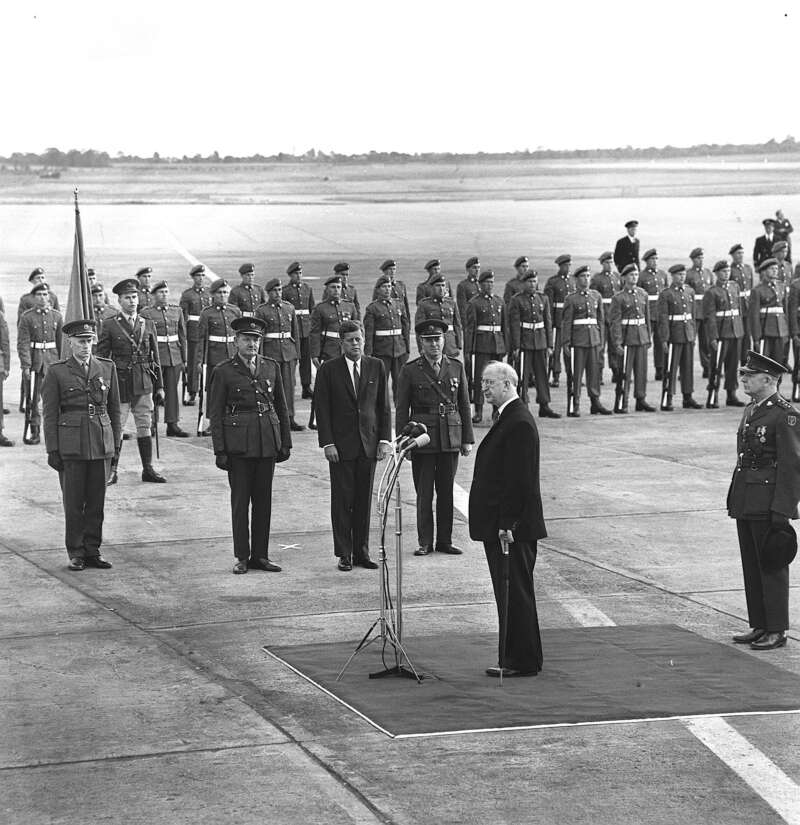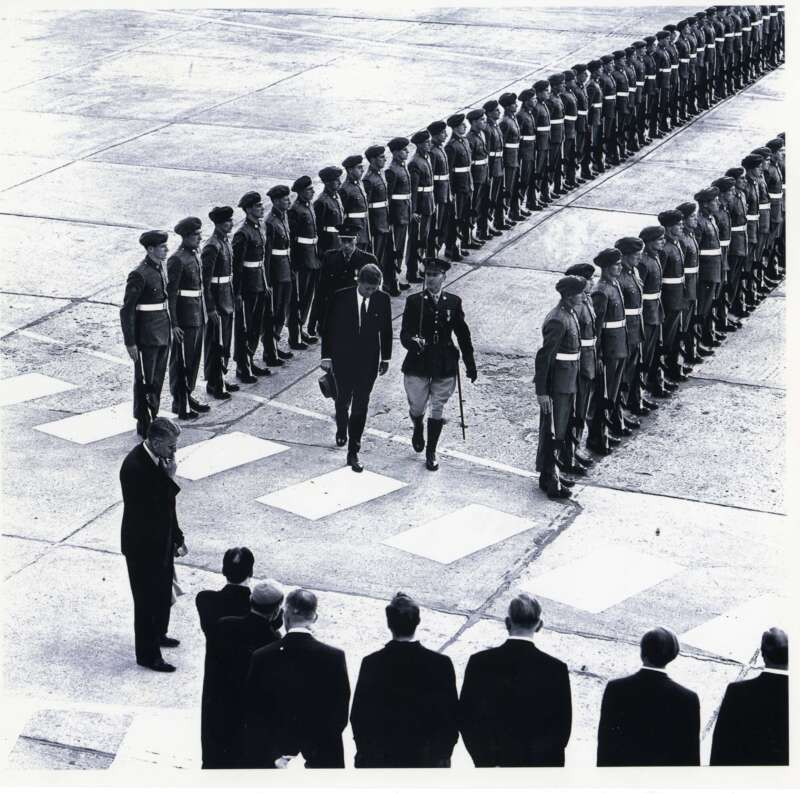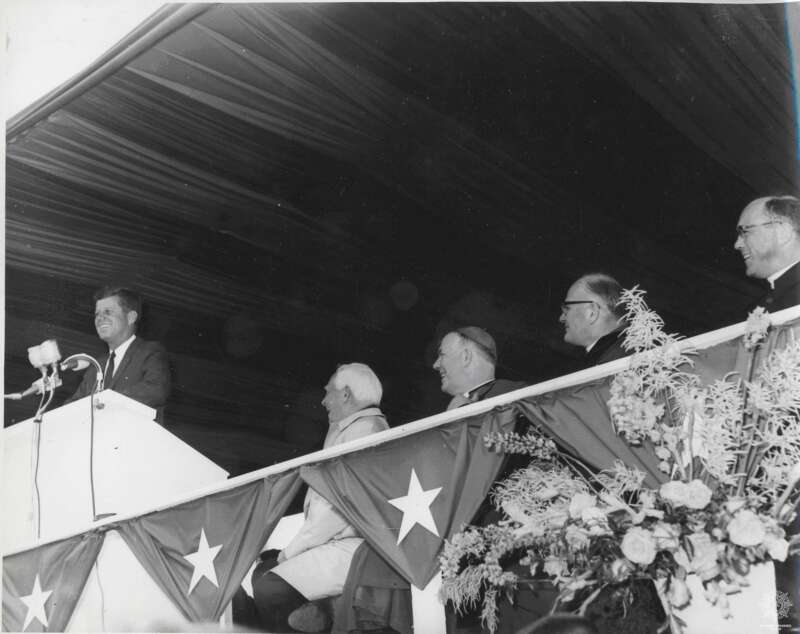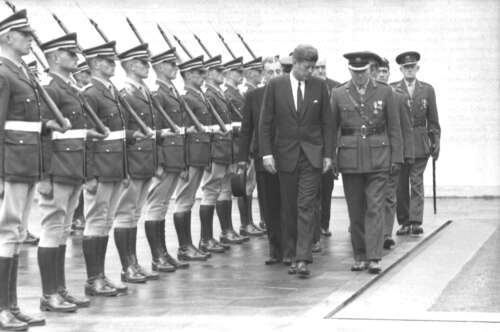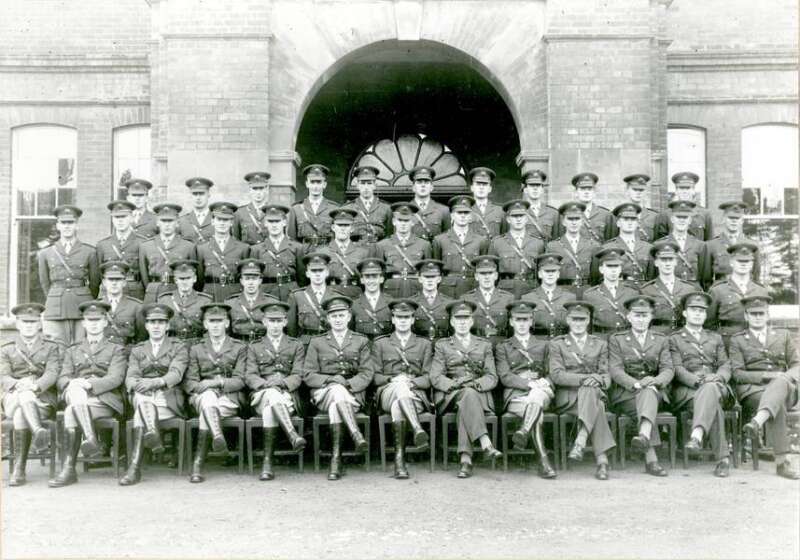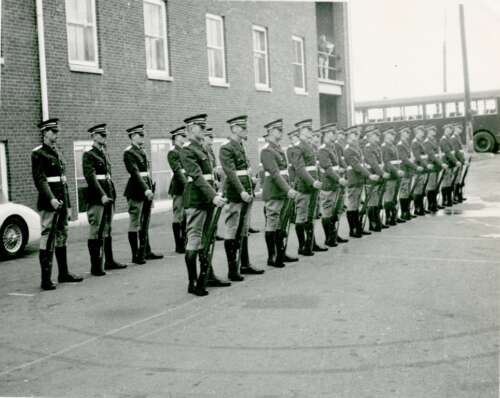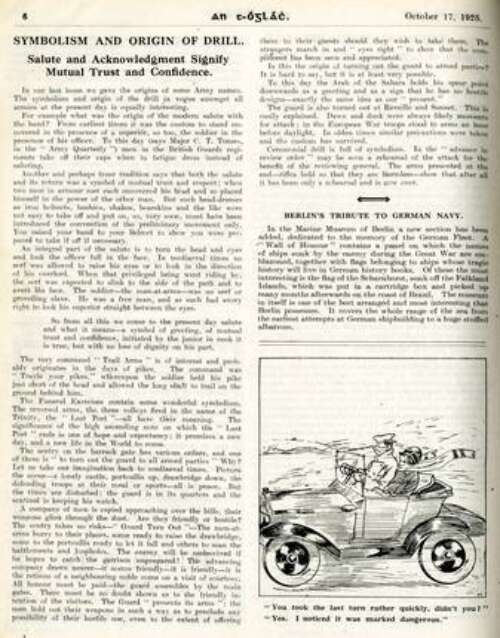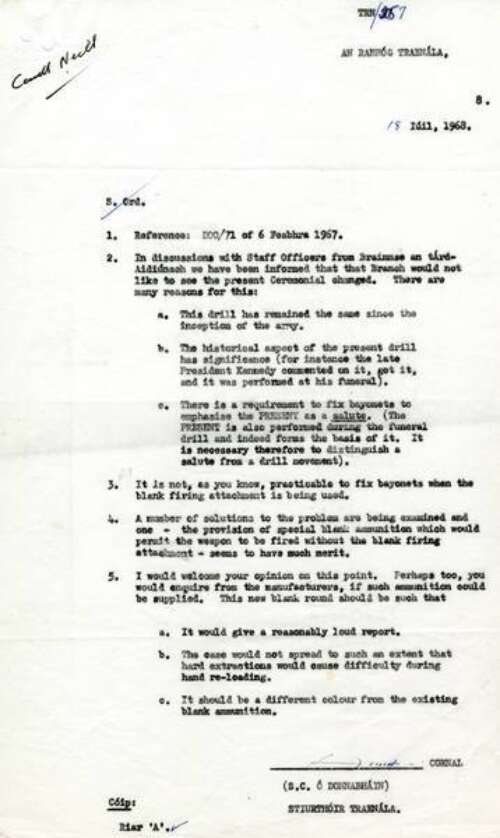The election of John Fitzgerald Kennedy to the office of the President of the United States in 1960 was celebrated as a momentous occasion in Ireland. The great-grandson of Irish immigrants, he regularly acknowledged his Irish roots and in June 1963 he became the first serving American President to pay a visit to Ireland.
Military Archives holds a wealth of material relating to the Defence Forces’ role in the presidential visit and their participation later that same year in his funeral ceremonies at Arlington Cemetery, Virginia.
Scroll through our online exhibition by clicking on the links in the left-hand sidebar, or else follow the link at the bottom of the page, to find out more about the logistics of Kennedy’s visit to Ireland, the background to the Cadets’ ceremonial drill and more.
Military Archives gratefully acknowledge the assistance of the Cadet School in the production of this exhibition. The collections or recollections of Brigadier General Frank Colclough (retd), Col William Nott (retd), Cpl P Fogarty (retd) and Col Fergus Marshall (retd) were also invaluable for this project.

